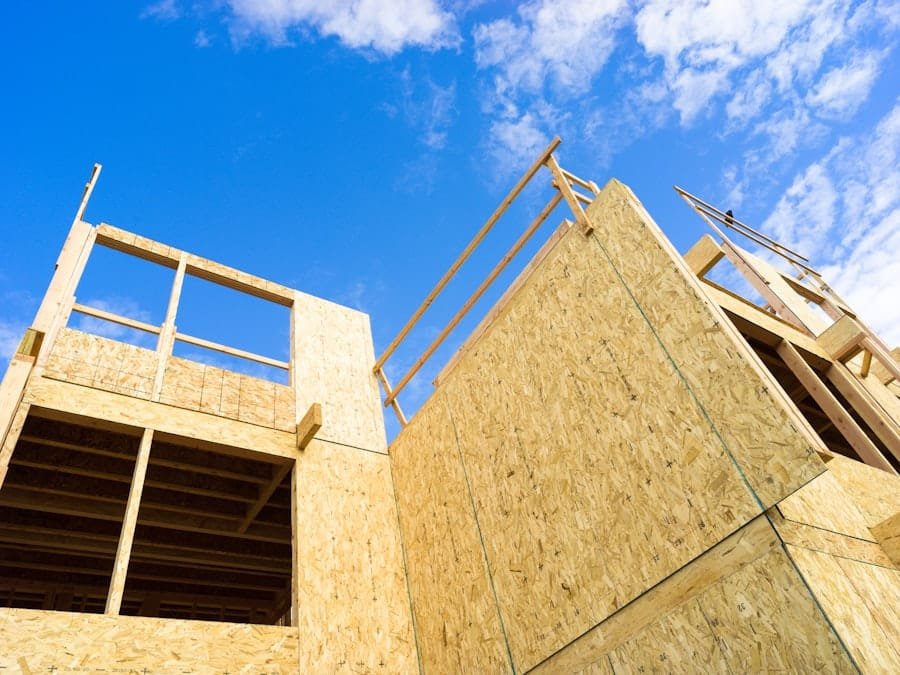Government infrastructure spending is the allocation of public funds for the construction, maintenance, and enhancement of essential public facilities and systems. This includes investments in transportation networks, such as roads, bridges, railways, and airports, as well as utilities like water supply, sewage systems, and electrical grids. Such expenditures are fundamental to a nation’s economic development, directly influencing citizens’ quality of life and business productivity.
Infrastructure spending is a critical element of governmental fiscal policy, often employed to boost economic growth, generate employment opportunities, and improve national competitiveness. In recent years, there has been increased emphasis on strategic infrastructure investment as a means to tackle challenges posed by deteriorating infrastructure, demographic shifts, and rapid urbanization. Effective infrastructure spending can lead to long-term economic benefits, enhanced public safety, and improved environmental sustainability.
Key Takeaways
- Government infrastructure spending is crucial for the development and maintenance of essential public facilities and services.
- The government plays a key role in infrastructure development by funding, planning, and regulating the construction and maintenance of infrastructure.
- Infrastructure spending stimulates economic growth by creating jobs, increasing productivity, and attracting private investment.
- Infrastructure spending has a direct impact on job creation, as it creates employment opportunities in construction, engineering, and related industries.
- Long-term economic effects of infrastructure investment include improved transportation, communication, and energy systems, leading to increased efficiency and competitiveness.
- Potential drawbacks of government infrastructure spending include cost overruns, inefficiency, and the risk of misallocation of resources.
- Strategic infrastructure investment is crucial for sustainable economic development and the well-being of society.
The Role of Government in Infrastructure Development
Regulatory Role
Additionally, governments often act as regulators and enforcers of safety and quality standards for infrastructure projects to protect public safety and ensure the longevity of infrastructure assets.
Partnerships and Collaborations
Furthermore, governments may also partner with private sector entities to finance and deliver infrastructure projects through public-private partnerships (PPPs). These partnerships can help leverage private sector expertise and resources to deliver infrastructure projects more efficiently and cost-effectively.
Ensuring Infrastructure Needs are Met
Ultimately, the government’s role is to ensure that infrastructure needs are met, and that the public has access to safe, reliable, and efficient infrastructure that supports economic growth and improves quality of life.
The Economic Benefits of Infrastructure Spending

Infrastructure spending has numerous economic benefits that contribute to the overall growth and development of a country. Firstly, it stimulates economic activity by creating demand for goods and services in the construction industry and related sectors. This, in turn, leads to job creation and income generation for workers and businesses involved in infrastructure projects.
Secondly, infrastructure investment can improve the productivity and efficiency of businesses by reducing transportation costs, increasing access to markets, and enhancing connectivity. This can lead to increased business investment, innovation, and competitiveness, which are essential for long-term economic growth. Additionally, infrastructure spending can have positive spillover effects on other sectors of the economy, such as tourism, manufacturing, and agriculture, by improving accessibility and connectivity.
Furthermore, strategic infrastructure investment can enhance the overall quality of life for citizens by providing essential services such as clean water, sanitation, healthcare facilities, and education institutions. This can lead to improved health outcomes, increased educational attainment, and higher living standards for the population. Moreover, infrastructure spending can contribute to environmental sustainability by promoting the use of green technologies and reducing carbon emissions through the development of sustainable transportation systems and energy-efficient buildings.
The Impact of Infrastructure Spending on Job Creation
One of the most significant impacts of infrastructure spending is its ability to create jobs and stimulate employment growth. Infrastructure projects require a large workforce with diverse skills ranging from construction workers and engineers to project managers and administrative staff. As a result, infrastructure spending can provide employment opportunities for a wide range of workers, including those with lower levels of education and specialized technical skills.
This can be particularly beneficial during periods of economic downturn or high unemployment rates when job creation is a top priority for governments. Moreover, the indirect job creation effects of infrastructure spending should not be overlooked. As infrastructure projects progress, they create demand for goods and services from other sectors of the economy, leading to additional job creation in industries such as manufacturing, transportation, and professional services.
For example, the construction of a new highway may lead to increased demand for construction materials, heavy machinery, and transportation services, thereby creating jobs in these related industries. Overall, infrastructure spending has a multiplier effect on job creation, leading to a significant boost in employment opportunities across various sectors of the economy.
The Long-Term Economic Effects of Infrastructure Investment
Infrastructure investment has long-term economic effects that extend beyond the immediate impact on job creation and economic activity. Well-planned and executed infrastructure projects can contribute to sustained economic growth by improving the productivity and competitiveness of businesses, reducing transportation costs, and enhancing connectivity. This can lead to increased trade flows, business investment, and innovation, which are essential for long-term economic development.
Furthermore, strategic infrastructure investment can enhance the resilience and adaptability of an economy by building critical infrastructure that can withstand natural disasters and other external shocks. For example, investments in flood protection systems, resilient energy grids, and disaster-resistant buildings can help mitigate the impact of climate change-related events and reduce economic disruptions. Additionally, infrastructure investment in research and development facilities, technology parks, and innovation hubs can foster a culture of innovation and entrepreneurship that drives long-term economic growth.
Potential Drawbacks of Government Infrastructure Spending

While government infrastructure spending has numerous benefits, there are also potential drawbacks that need to be considered. One potential drawback is the risk of misallocation or inefficient use of resources if infrastructure projects are not carefully planned and prioritized. This can lead to cost overruns, delays in project completion, and suboptimal outcomes that do not fully realize the intended economic benefits.
Additionally, there is a risk of corruption and mismanagement in large-scale infrastructure projects if proper oversight mechanisms are not in place. Moreover, excessive reliance on government borrowing to finance infrastructure projects can lead to an increase in public debt levels, which may have long-term implications for fiscal sustainability. High levels of public debt can crowd out private investment, increase borrowing costs for the government, and limit fiscal flexibility in responding to future economic challenges.
Furthermore, there is a risk that poorly designed or implemented infrastructure projects may have negative environmental or social impacts if they are not aligned with sustainable development principles or community needs.
The Importance of Strategic Infrastructure Investment
In conclusion, government infrastructure spending plays a crucial role in driving economic growth, creating jobs, and enhancing the overall quality of life for citizens. Strategic infrastructure investment can lead to numerous economic benefits such as increased productivity, improved competitiveness, and enhanced connectivity. Moreover, it can contribute to long-term economic development by fostering innovation, resilience, and sustainability.
However, it is essential for governments to carefully plan and prioritize infrastructure projects to ensure efficient use of resources and maximize their economic impact. Additionally, proper oversight mechanisms should be in place to mitigate the risks of misallocation, corruption, and environmental or social harm. Overall, strategic infrastructure investment is a key tool for governments to promote economic development and improve the well-being of their citizens.
For more insights on the economic impact of government infrastructure spending, check out the article “The Role of Public Investment in Economic Growth” on The Econosphere. This article delves into the relationship between public investment in infrastructure and overall economic growth, providing a comprehensive analysis of the topic. It offers valuable perspectives on how government spending on infrastructure can stimulate economic activity and create long-term benefits for society.
FAQs
What is government infrastructure spending?
Government infrastructure spending refers to the allocation of funds by the government for the construction, maintenance, and improvement of public infrastructure such as roads, bridges, airports, and public transportation systems.
What is the economic impact of government infrastructure spending?
Government infrastructure spending can have a significant economic impact by creating jobs, stimulating economic growth, and improving the overall productivity of the economy. It can also attract private investment and enhance the competitiveness of businesses.
How does government infrastructure spending create jobs?
Government infrastructure spending creates jobs directly through the construction and maintenance of infrastructure projects, as well as indirectly through the increased demand for goods and services in the economy.
What are the long-term benefits of government infrastructure spending?
Long-term benefits of government infrastructure spending include improved transportation networks, enhanced connectivity, increased productivity, and a more attractive environment for businesses and investors.
How does government infrastructure spending stimulate economic growth?
Government infrastructure spending can stimulate economic growth by increasing the overall level of economic activity, attracting private investment, and improving the efficiency of the economy through better infrastructure.
What are some examples of government infrastructure projects?
Examples of government infrastructure projects include the construction of highways, bridges, public transportation systems, airports, seaports, and the development of water and sanitation systems.








